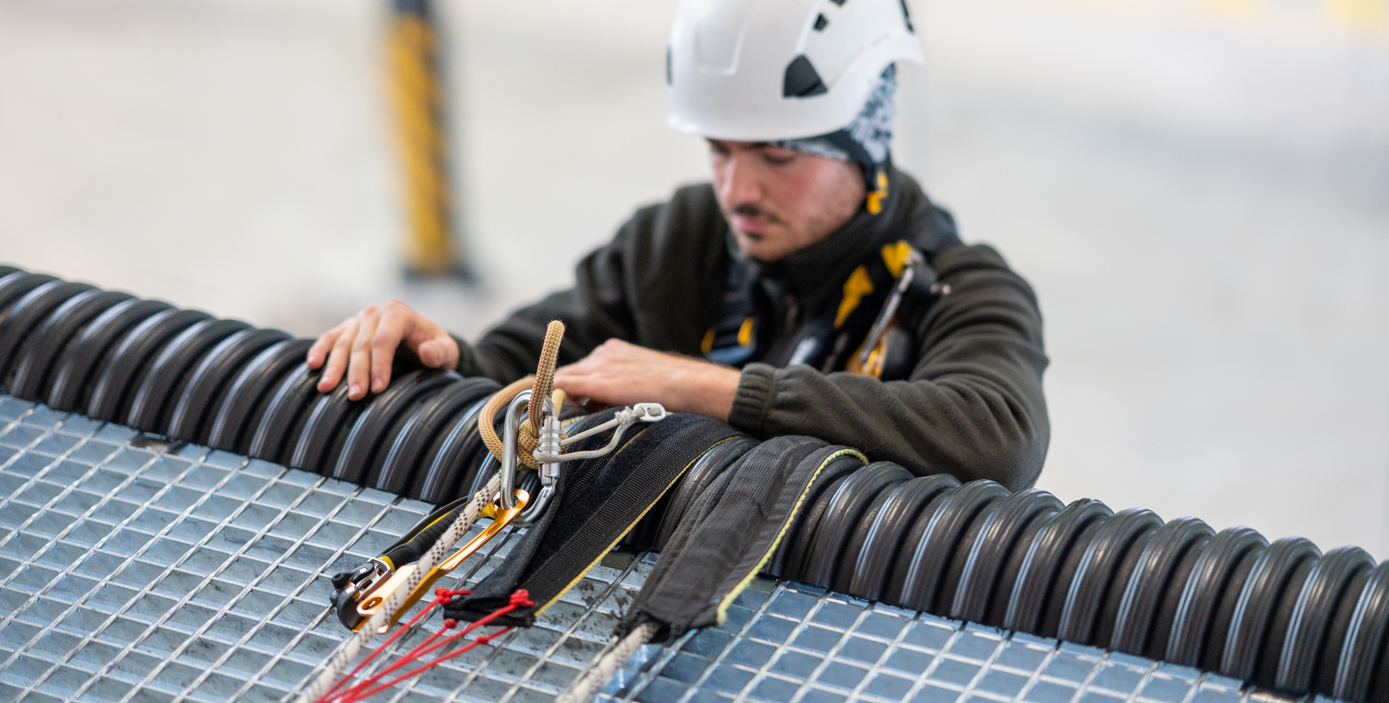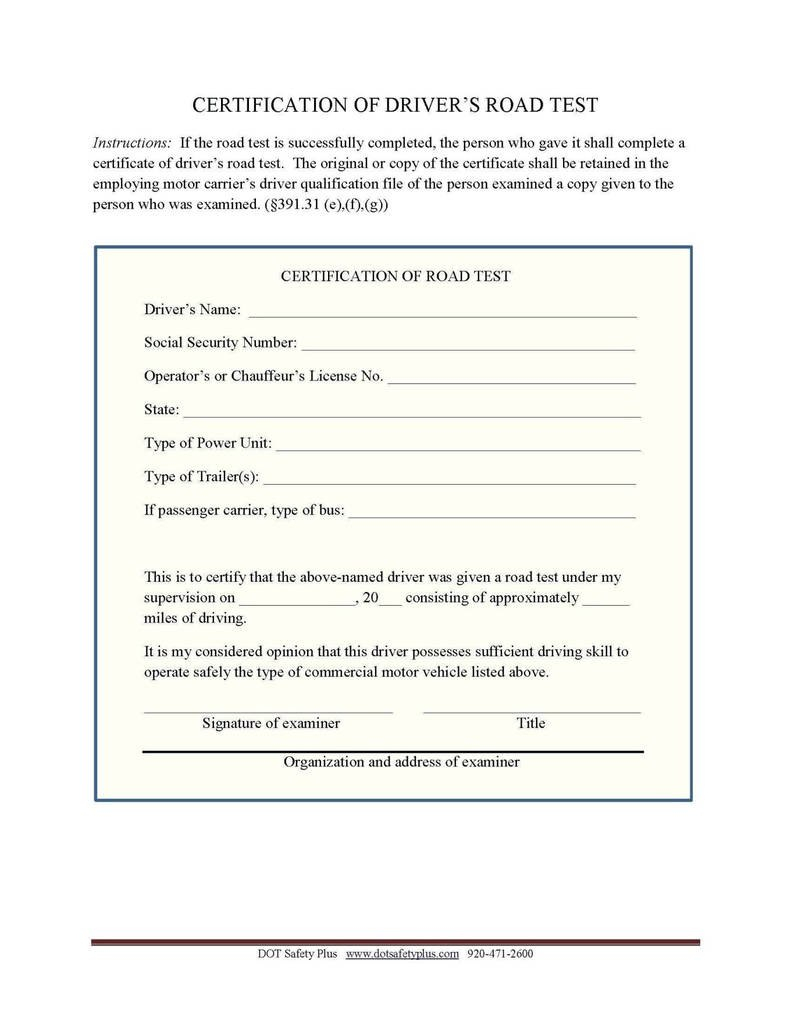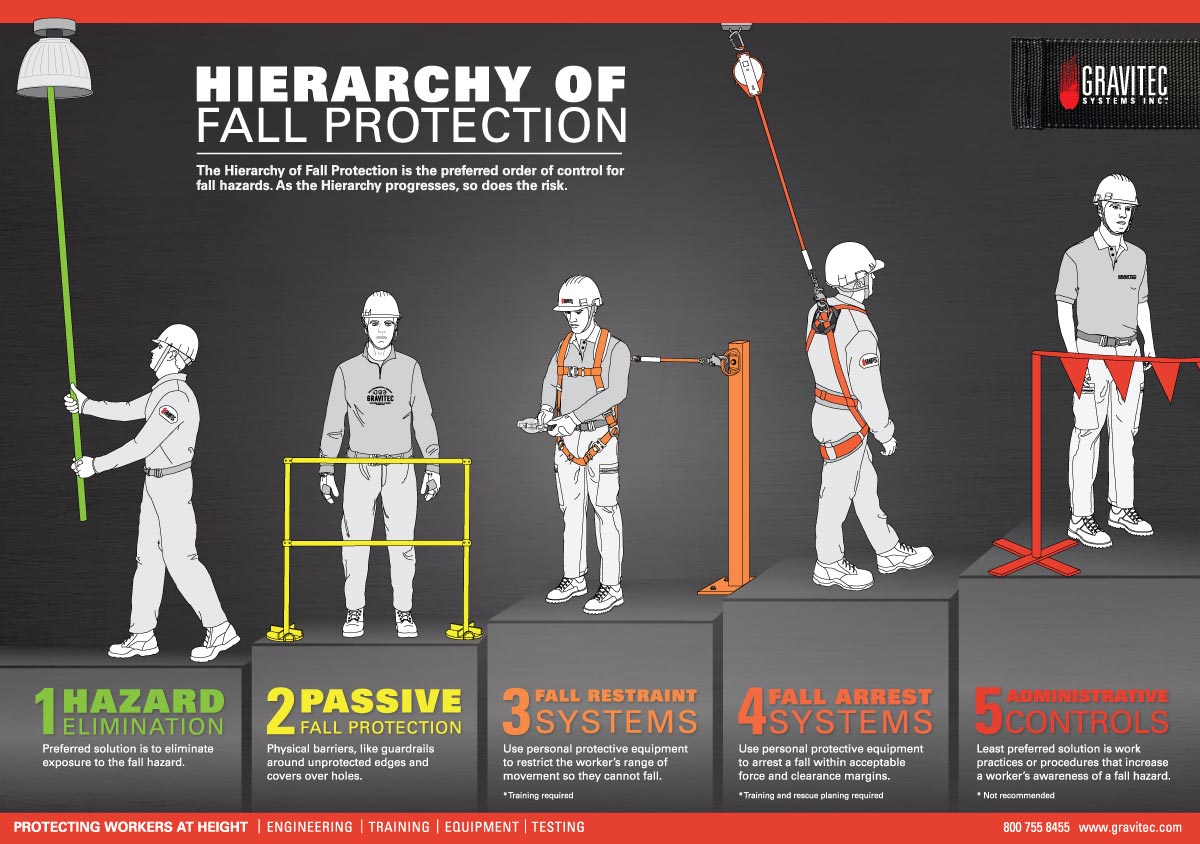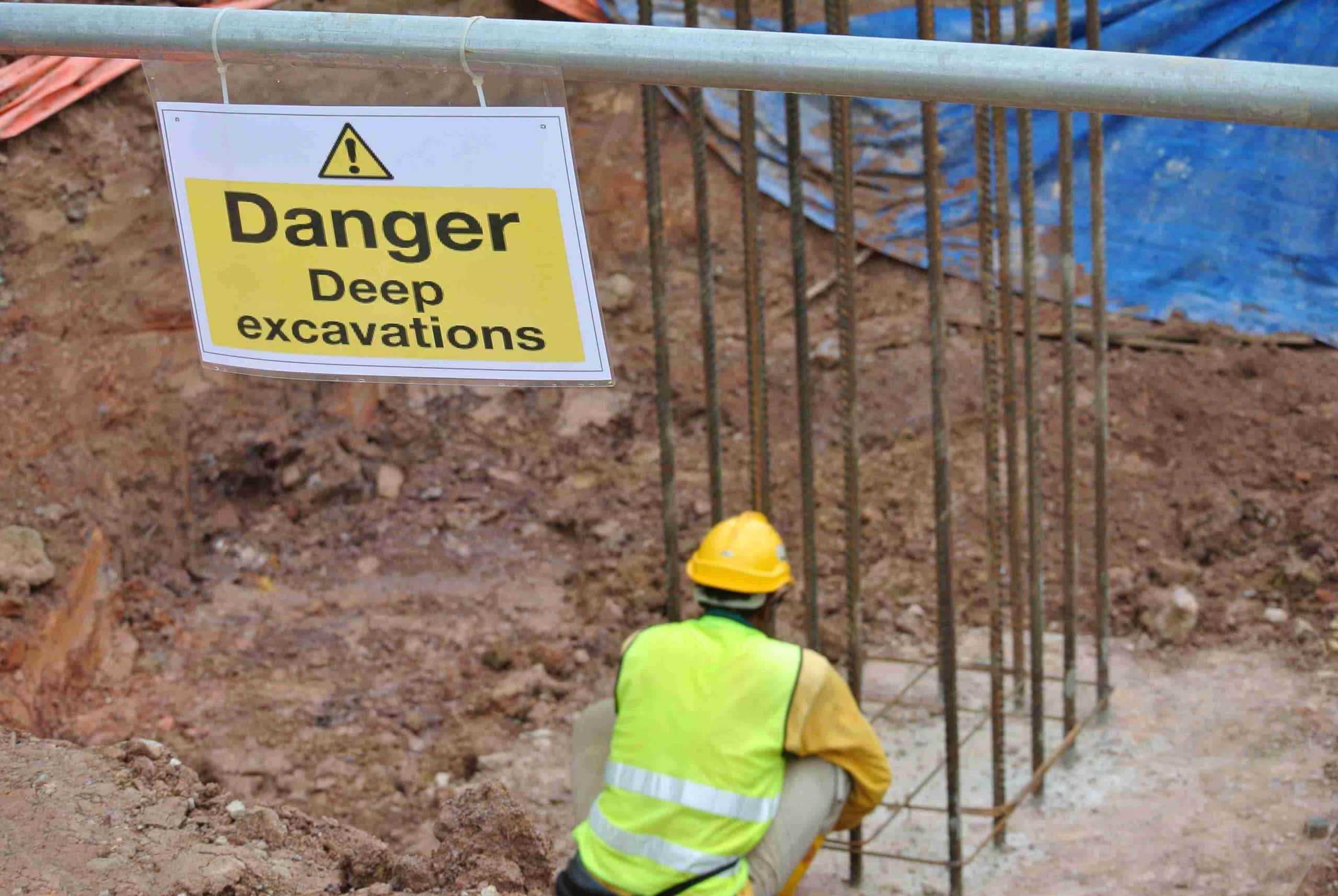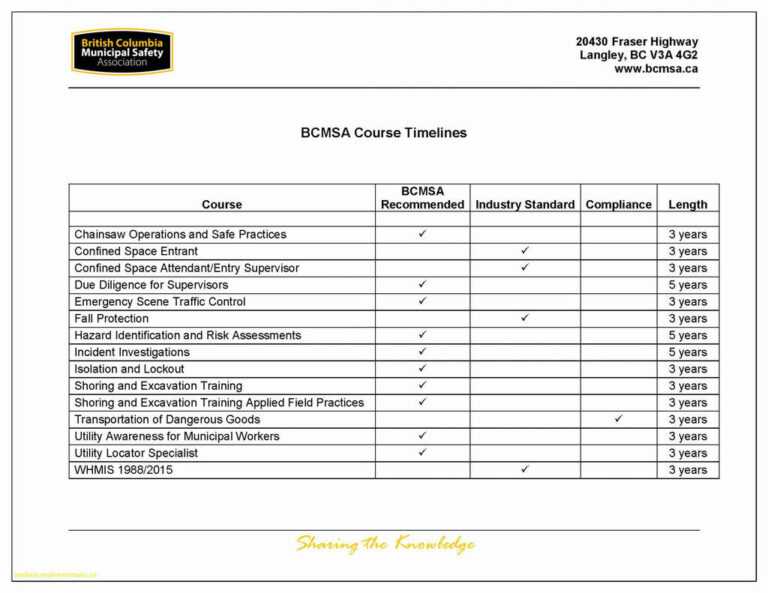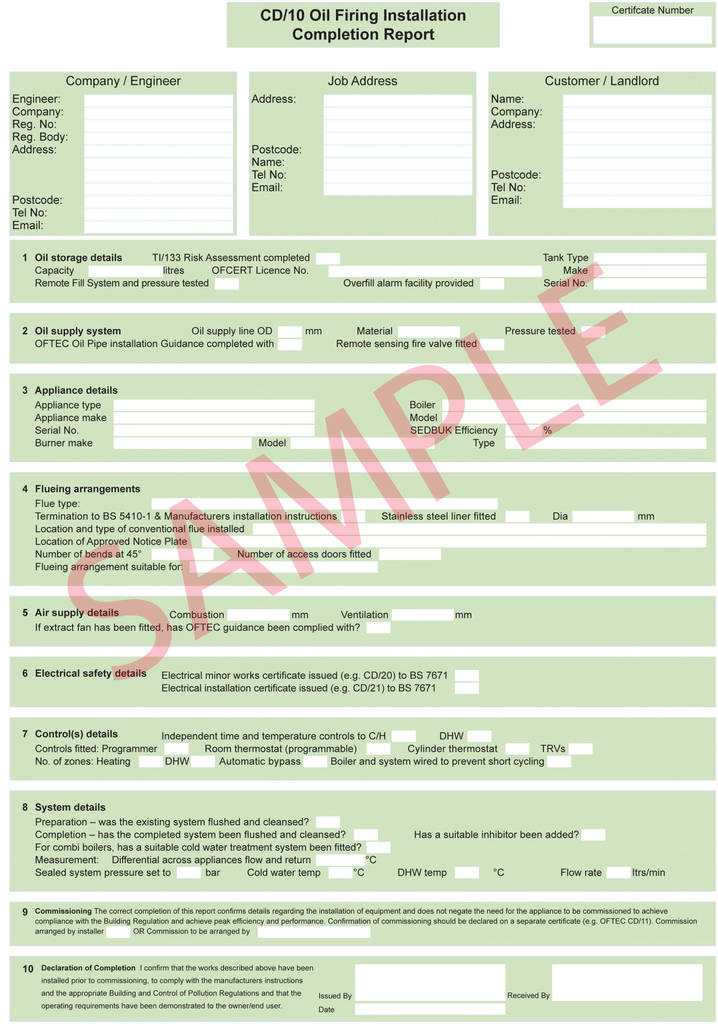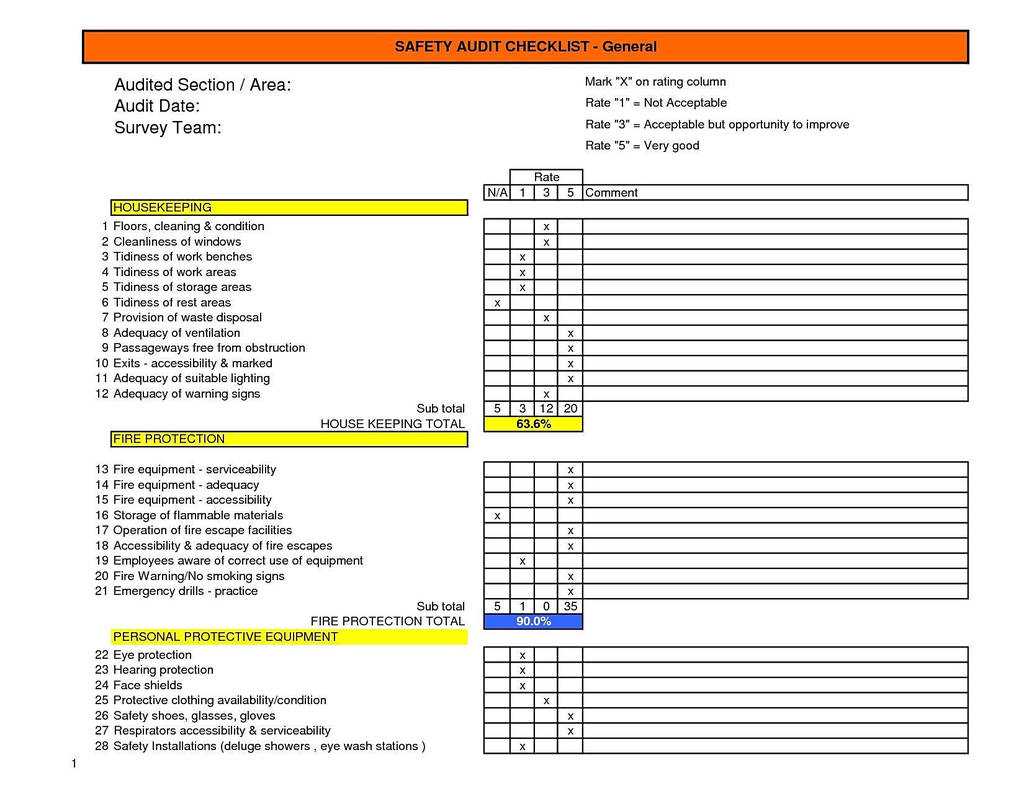The Following Forms Of Fall Protection Are Suitable For Excavations
The Following Forms Of Fall Protection Are Suitable For Excavations - Each employee at the edge of an excavation 6 feet (1.8 meters) or deeper shall be protected from falling by guardrail systems, fences, barricades,. If you can fall more than 6 feet, you must be protected 2. Walkways & ramps, open sides & edges, holes, concrete. Construction workers must be protected from falling by the use of guard rail systems, safety net systems, personal fall arrest systems, and or. Specifically, you ask if fall protection is required around vertical walled trenches that have a depth 6 feet or greater; The suitable forms of fall protection when workers are required to pass over an excavation more than six feet deep are. The following forms of fall protection are suitable when workers are required to pass over an excavation more than six feet deep.
Specifically, you ask if fall protection is required around vertical walled trenches that have a depth 6 feet or greater; Construction workers must be protected from falling by the use of guard rail systems, safety net systems, personal fall arrest systems, and or. The following forms of fall protection are suitable when workers are required to pass over an excavation more than six feet deep. Each employee at the edge of an excavation 6 feet (1.8 meters) or deeper shall be protected from falling by guardrail systems, fences, barricades,. Walkways & ramps, open sides & edges, holes, concrete. The suitable forms of fall protection when workers are required to pass over an excavation more than six feet deep are. If you can fall more than 6 feet, you must be protected 2.
The suitable forms of fall protection when workers are required to pass over an excavation more than six feet deep are. The following forms of fall protection are suitable when workers are required to pass over an excavation more than six feet deep. Construction workers must be protected from falling by the use of guard rail systems, safety net systems, personal fall arrest systems, and or. Walkways & ramps, open sides & edges, holes, concrete. Each employee at the edge of an excavation 6 feet (1.8 meters) or deeper shall be protected from falling by guardrail systems, fences, barricades,. Specifically, you ask if fall protection is required around vertical walled trenches that have a depth 6 feet or greater; If you can fall more than 6 feet, you must be protected 2.
Basics of Fall Protection Fall Protection 101
Construction workers must be protected from falling by the use of guard rail systems, safety net systems, personal fall arrest systems, and or. If you can fall more than 6 feet, you must be protected 2. Walkways & ramps, open sides & edges, holes, concrete. Each employee at the edge of an excavation 6 feet (1.8 meters) or deeper shall.
Fall Protection Safety Training for OSHA Compliance
The suitable forms of fall protection when workers are required to pass over an excavation more than six feet deep are. The following forms of fall protection are suitable when workers are required to pass over an excavation more than six feet deep. If you can fall more than 6 feet, you must be protected 2. Walkways & ramps, open.
The Following Forms Of Fall Protection Are Suitable For Excavations
Walkways & ramps, open sides & edges, holes, concrete. If you can fall more than 6 feet, you must be protected 2. Each employee at the edge of an excavation 6 feet (1.8 meters) or deeper shall be protected from falling by guardrail systems, fences, barricades,. The suitable forms of fall protection when workers are required to pass over an.
The Ultimate Guide to Fall Protection
If you can fall more than 6 feet, you must be protected 2. Construction workers must be protected from falling by the use of guard rail systems, safety net systems, personal fall arrest systems, and or. Specifically, you ask if fall protection is required around vertical walled trenches that have a depth 6 feet or greater; The suitable forms of.
Fall Protection Calculations Safety Made Simple
Construction workers must be protected from falling by the use of guard rail systems, safety net systems, personal fall arrest systems, and or. The following forms of fall protection are suitable when workers are required to pass over an excavation more than six feet deep. Walkways & ramps, open sides & edges, holes, concrete. If you can fall more than.
what are the 4 methods of fall protection lilliefaruolo
The following forms of fall protection are suitable when workers are required to pass over an excavation more than six feet deep. Each employee at the edge of an excavation 6 feet (1.8 meters) or deeper shall be protected from falling by guardrail systems, fences, barricades,. Walkways & ramps, open sides & edges, holes, concrete. The suitable forms of fall.
What are the important excavation safety measures? Blog
The following forms of fall protection are suitable when workers are required to pass over an excavation more than six feet deep. If you can fall more than 6 feet, you must be protected 2. Specifically, you ask if fall protection is required around vertical walled trenches that have a depth 6 feet or greater; Construction workers must be protected.
The Following Forms Of Fall Protection Are Suitable For Inside Fall
The suitable forms of fall protection when workers are required to pass over an excavation more than six feet deep are. The following forms of fall protection are suitable when workers are required to pass over an excavation more than six feet deep. If you can fall more than 6 feet, you must be protected 2. Construction workers must be.
The Following Forms Of Fall Protection Are Suitable For In Fall
If you can fall more than 6 feet, you must be protected 2. Each employee at the edge of an excavation 6 feet (1.8 meters) or deeper shall be protected from falling by guardrail systems, fences, barricades,. Specifically, you ask if fall protection is required around vertical walled trenches that have a depth 6 feet or greater; The suitable forms.
The Following Forms Of Fall Protection Are Suitable For In Fall
Each employee at the edge of an excavation 6 feet (1.8 meters) or deeper shall be protected from falling by guardrail systems, fences, barricades,. Walkways & ramps, open sides & edges, holes, concrete. Construction workers must be protected from falling by the use of guard rail systems, safety net systems, personal fall arrest systems, and or. The following forms of.
Specifically, You Ask If Fall Protection Is Required Around Vertical Walled Trenches That Have A Depth 6 Feet Or Greater;
If you can fall more than 6 feet, you must be protected 2. Construction workers must be protected from falling by the use of guard rail systems, safety net systems, personal fall arrest systems, and or. The suitable forms of fall protection when workers are required to pass over an excavation more than six feet deep are. Each employee at the edge of an excavation 6 feet (1.8 meters) or deeper shall be protected from falling by guardrail systems, fences, barricades,.
The Following Forms Of Fall Protection Are Suitable When Workers Are Required To Pass Over An Excavation More Than Six Feet Deep.
Walkways & ramps, open sides & edges, holes, concrete.

